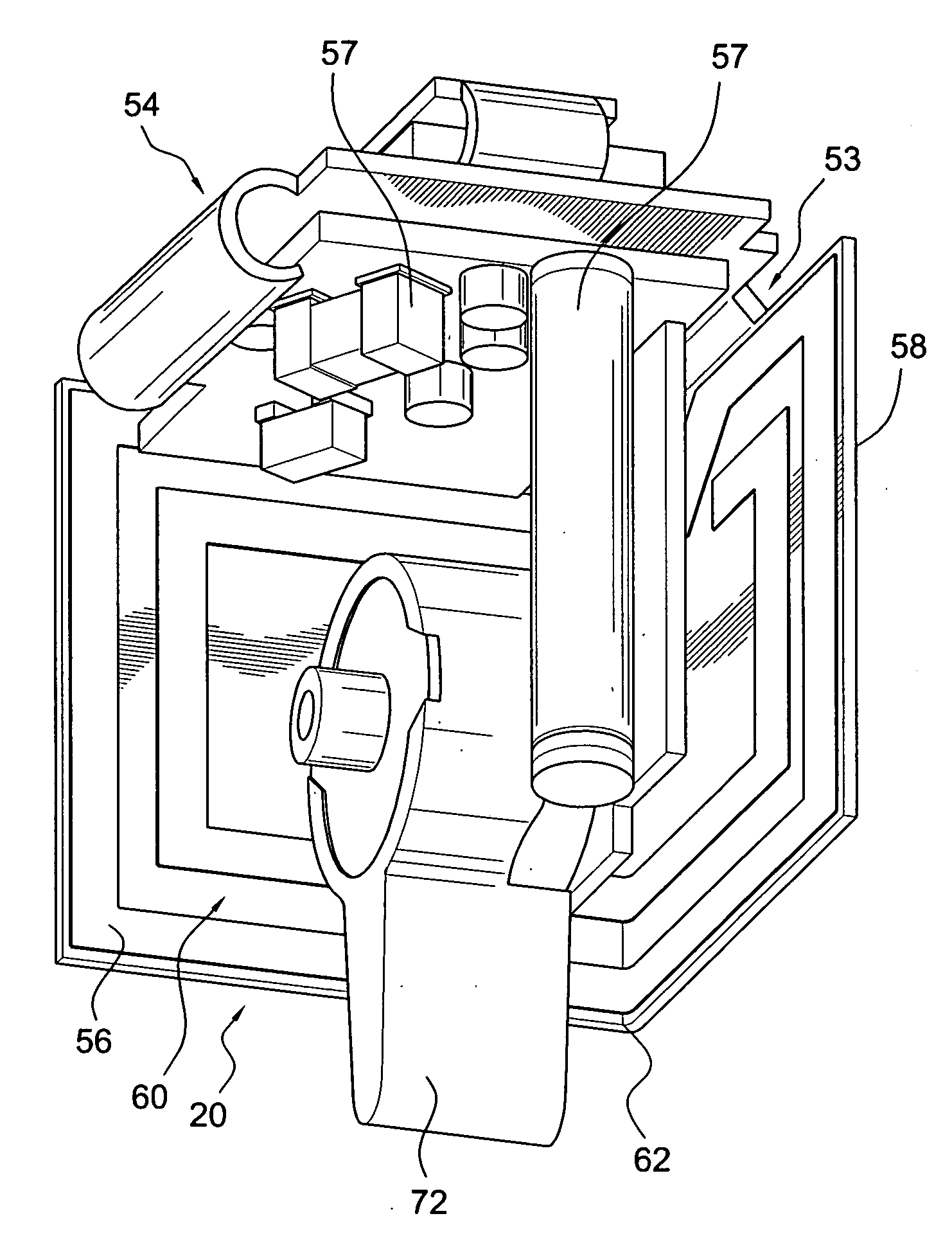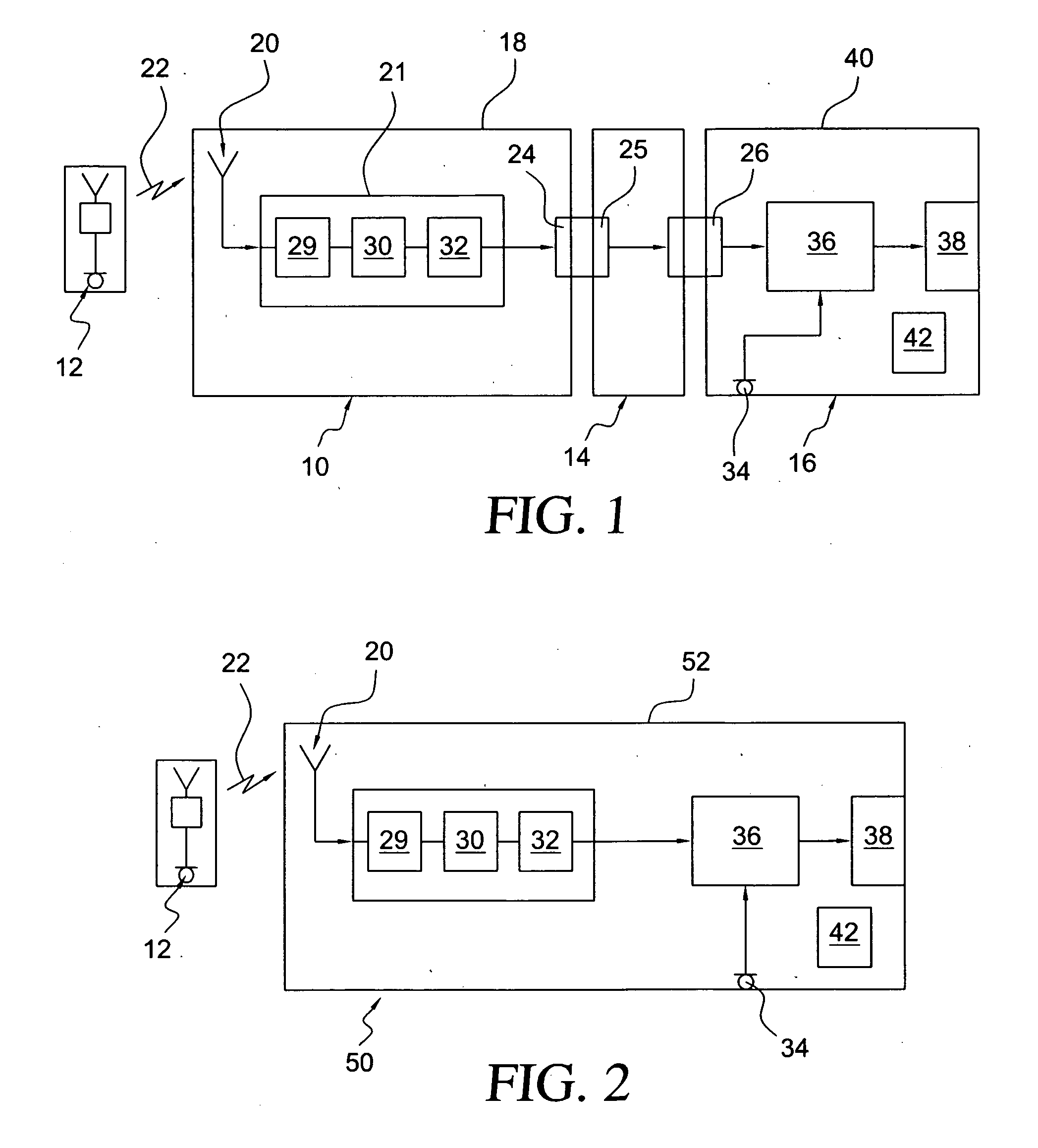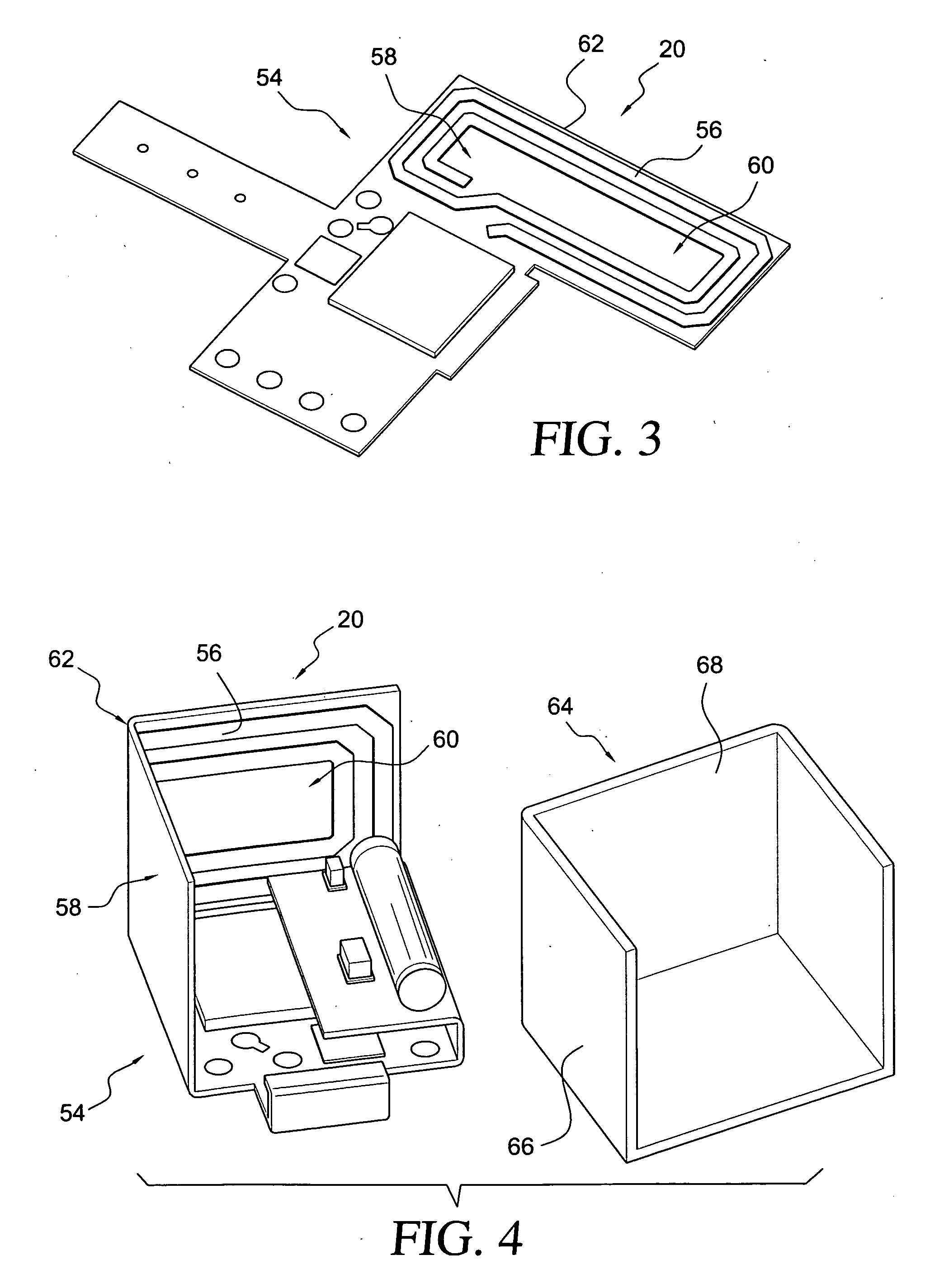Wireless audio signal receiver device for a hearing instrument
a receiver device and audio signal technology, applied in the direction of flexible aerials, antennas, collapsible antennas, etc., can solve the problems of large geometrical dimensions, instruction of users, and large dimensions of receiver devices, so as to reduce the volume of the receiver device, avoid rotatable connectors, and be more compact
- Summary
- Abstract
- Description
- Claims
- Application Information
AI Technical Summary
Benefits of technology
Problems solved by technology
Method used
Image
Examples
Embodiment Construction
[0040]FIG. 1 shows a block diagram of a receiver device 10 capable of wirelessly receiving audio signals from a remote source 12, which is connected via an audio shoe 14 to a healing instrument 16 which may be a behind-the-ear (BTE) hearing aid which is worn at the user's ear. The remote audio signal source typically may be a transmitter unit comprising a microphone which is worn by a teacher in a classroom for teaching hearing-impaired pupils.
[0041] The receiver device 10 comprises a housing 18, a magnetic loop-antenna 20 for receiving radio-frequency signals carrying audio-signals from the remote source 12 via a radio-frequency link 22, a signal processing unit 21 for reproducing audio signals from the radio frequency signals received by the antenna 20, and an output interface 24 which is capable of being mechanically connected to an input interface 26 of the hearing instrument 16 via the audio shoe 14 which comprises an input interface 25 mating with the output interface 24. The...
PUM
| Property | Measurement | Unit |
|---|---|---|
| angle | aaaaa | aaaaa |
| angle | aaaaa | aaaaa |
| angle | aaaaa | aaaaa |
Abstract
Description
Claims
Application Information
 Login to View More
Login to View More - R&D
- Intellectual Property
- Life Sciences
- Materials
- Tech Scout
- Unparalleled Data Quality
- Higher Quality Content
- 60% Fewer Hallucinations
Browse by: Latest US Patents, China's latest patents, Technical Efficacy Thesaurus, Application Domain, Technology Topic, Popular Technical Reports.
© 2025 PatSnap. All rights reserved.Legal|Privacy policy|Modern Slavery Act Transparency Statement|Sitemap|About US| Contact US: help@patsnap.com



